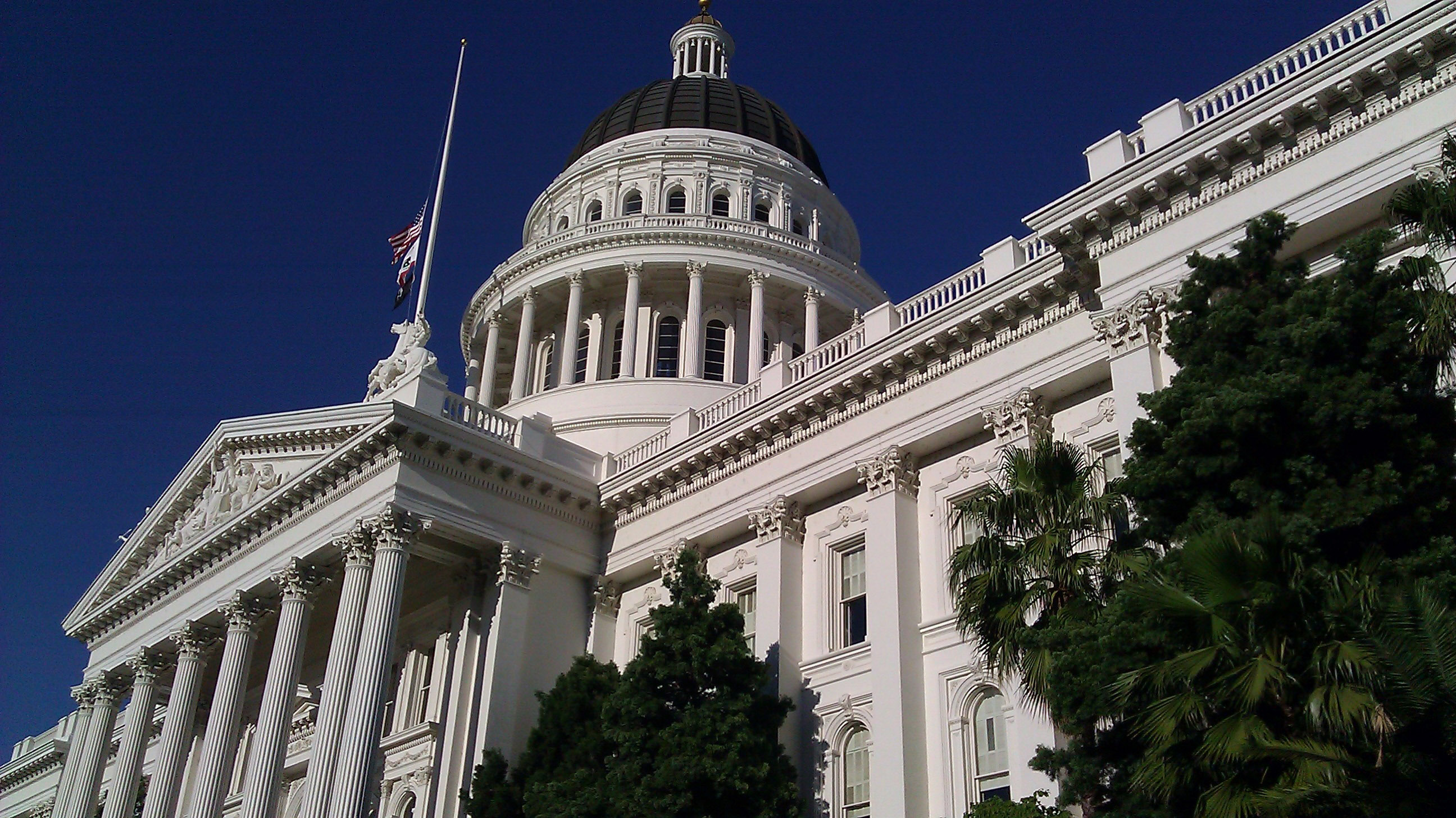Economy
Governor’s ‘Regions Rise Together’ Initiative Is Worthy, But Misses The Mark In Understanding Inland California’s Economies

Comparison To Coastal Regions Misleading, May Distort Policy Direction
October 24, 2019— RIVERSIDE, Calif. (www.ucr.edu) — A new study is questioning a number of basic assumptions being made about the economies of inland California under the Region’s Rise Together initiative from the Governor’s Office of Business and Economic Development (GO-Biz). While the analysis, released today by the UC Riverside School of Business Center for Economic Forecasting and Development, throws full support behind GO-Biz’s effort to create a ‘California for All’ future, it argues that a fundamental misunderstanding exists about the economies in the interior part of the state.
“I couldn’t be more supportive of the underlying idea behind GO-Biz’s initiative – it’s about time major policy efforts consider and involve all the state’s regions more heavily – however the conversation has started with the faulty assumption that California’s inland economies are broken, and need to somehow catch up to their coastal counterparts,” said Christopher Thornberg, Director of the Center for Forecasting and the report’s author. “This matters because our understanding of any economy essentially defines the policy prescriptions that are developed to support it. If our fundamental assumptions are inaccurate, the policies will be at best ineffective and at worst counterproductive.”
In the new analysis, which focuses heavily on the Inland Empire, Thornberg presents a far more positive view of that region and other inland economies, arguing that when proper context is applied, the dismal statistics being used by GO-Biz fail on a serious level to accurately characterize what inland regions are and where they are heading.
For example, the statistic promoted by GO-Biz that 70% of California’s job growth from 2010 to 2018 came from the coastal areas around Los Angeles, San Francisco, and San Diego, completely omits growth rates. In 2010, the state’s coastal economies contained over 10 million jobs while inland economies contained just 4 million. By definition, far more jobs will form in the coastal areas because they are building off a much larger base. However, when looking at rate of growth, the inland regions of the state outperform both the coast and the nation as a whole: The employment base in inland California expanded by 24.4% from 2010 to 2018 compared to 21% across the state’s coastal regions and 16.5% in United States overall.
According to the analysis, it isn’t just the growth rate that impresses—so does the overall scale of economic activity once context is provided. “The 4.9 million jobs located in inland California would make it the 8th largest state in the nation by job count – larger than Georgia, Michigan, New Jersey, and Virginia – that is a big economy even if not as big as LA and San Francisco,” said Thornberg.
Focusing on the Inland Empire, the analysis also addresses one of the leading criticisms of the state’s inland economies: that wages are lower than they are along the coast. But according to Thornberg, this is only a reflection of a different type of resident and industry mix. When controlling for education level, wages in the Inland Empire are largely the same as in coastal regions—with the added bonus of significantly lower housing costs.
The analysis argues that the inland parts of the state provide residents, including lower-skilled residents, real opportunity and a path forward, stating that these regions “are the future of growth in California, offering middle and lower skill residents a quality of life they would be unable to obtain along the coast.” Thornberg notes that understanding this kind of context is critical for successful planning and economic development strategy, while oversimplified comparisons to the coast skew what is actually a much more nuanced reality.
The complete analysis, Rising High Requires the Right Foundation: Understanding the Economies of Inland California, also addresses land use and zoning issues in the Inland Empire that may be partly driving economic development challenges.
The full report is available here.
###
The UC Riverside School of Business Center for Economic Forecasting and Development is the first major university forecasting center in Inland Southern California. The Center produces economic forecasting and policy research focused on the region, state, and nation. Learn more at UCREconomicForecast.org.
Business
Economist Christopher Thornberg, State Treasurer Fiona Ma Headline New Forecast Conference

Coming October 5th
Economic Horizon 2024: What Lies Ahead?
The Inland Empire Regional Chamber of Commerce, in collaboration with Beacon Economics and the County of San Bernardino, is thrilled to announce that the anticipated economic forecast conference, Economic Horizon 2024: What Lies Ahead, Inland Empire? will be held October 5th from 3:30 PM to 6:30 PM at the El Prado Golf Courses in the vibrant city of Chino, California.
Esteemed economist, Dr. Christopher Thornberg will present complete outlooks for the U.S., California, and Inland Empire economies. “The Inland Empire stands at the crossroads of remarkable economic opportunities and challenges,” said Thornberg. “I’m excited to unpack the trends and shifts that will define the region’s economic landscape in the next year, and beyond.”
Known for his razor-sharp observations, and fun, energized delivery, Thornberg’s presentation will include pointed discussions about inflation, the Fed’s next move, housing markets, strengths and instabilities in the economy, and what current trends mean for the nation, state, and local region.
The conference will also be graced by the insights of California State Treasurer Fiona Ma as keynote speaker. In her words, “The strength of California’s economy is deeply interwoven with the growth trajectories of its regions. The Inland Empire, with its dynamism and resilience, is a testament to this synergy. I am honored to join ‘Economic Horizon 2024’ and share a vision where policies, partnerships, and potentials converge to elevate the Inland Empire to unprecedented economic heights.”
“This conference is a testament to the collaborative spirit of the Inland Empire and our commitment to fostering a robust, resilient economy,” said Edward Ornelas, Jr., President of the Inland Empire Regional Chamber of Commerce. “Our partnership with Beacon Economics and the County of San Bernardino aims to offer a platform for profound economic discussion, forecasting, and strategic future planning.”
Attendees can anticipate not only expert insights into the economy but also networking opportunities and a chance to connect with key business, government, and nonprofit leaders from across the region.
Full event details are available at: economy.iechamber.org
Economy
The Recession That Didn’t Happen… And Why Most Forecasters Got It Wrong
Bizz Buzz
Workforce Development Earns National Achievement Awards

#bizzbuzz
Inspired by the Board of Supervisors’ commitment to meet the needs of employers and jobseekers and foster a vibrant local economy, the San Bernardino County Workforce Development Department has been honored with eight 2023 Achievement Awards from the National Association of Counties (NACo).
Among the services and initiatives for which WDB was honored were the Rapid Response Community Resource Fair, Economic Recovery Business Outreach Program and, in partnership with the Public Defender’s office, the Record Clearing, Resource and Employment Fairs.
Thanks to strong and stable leadership and policy direction from Board of Supervisors Chair Dawn Rowe and her colleagues on the Board of Supervisors, San Bernardino County received a record-breaking 160 NACo awards this year. The awards reflect the Board’s efforts to cultivate the innovation that leads to the development of outstanding public service programs.
The NACo awards recognize the best of the best among county governments across the U.S. Nationwide, 40,000 county elected officials and 3.6 million county employees provide important services, such as caring for our physical and mental health, maintaining roads, ensuring public safety, strengthening environmental stewardship, administering elections and much more.
“The Workforce Development programs and services recognized by NACo highlight the extraordinary work being done by Workforce Development to enhance career opportunities for our residents and help businesses grow,” Rowe said.
The first Rapid Response Community Resource Fair was developed shortly after United Furniture Industries (UFI) abruptly laid off more 300 employees in the High Desert without advance notice just days before Thanksgiving 2022. When Workforce Development was alerted, staff quickly mobilized businesses and community partners to help connect those laid off to available employment opportunities, as well as various other community resources. Approximately 275 of the affected UFI employees were offered new employment opportunities as a result.
The Economic Recovery Business Outreach Program was a pilot program that tapped into the wide-reaching business network of chambers of commerce. This collaboration between WDB and various chambers of commerce throughout the county was designed to leverage the relationship between chambers and small businesses to build awareness and accessibility to Workforce Development services available to them. Outcomes as a result of this partnership include various successful services including job listings, job fairs, positions filled, and job training assistance, among others.
Perhaps the most impactful program receiving this recognition is the Record Clearing, Resource and Employment Fairs. Workforce Development and the Public Defender’s Office have partnered with businesses and community organizations to increase economic access and equity. The partnership was designed to bring critical resources directly into the community – to churches, community centers, community colleges, and America’s Job Centers – for those looking to remove barriers and increase their access to employment opportunities and other services. The Public Defender helps participants by providing expungement or record clearing services, and Workforce Development brings employers with job opportunities, all within the same location. The events have been well received and proven useful to the community, making this a long-term partnership, not only between Workforce Development and the Public Defender’s office but a long list of other community organizations that have also participated.
“Our team and board feel fortunate to be recognized for these awards,” said William Sterling, chairman of the Workforce Development Board. “The underlying factor of the programs being recognized are partnerships. We feel fortunate for our staff and the relationships developed with other departments and organizations and the impact these services have had within our communities, which is at the core of what public service is supposed to be.”
-

 Opinion1 month ago
Opinion1 month agoSurge in Unemployment Among California Youth Linked to Minimum Wage Hikes
-

 Commercial Real Estate Transactions3 weeks ago
Commercial Real Estate Transactions3 weeks agoSRS Real Estate Partners Announces Record-Breaking $6.15 Million Ground Lease Sale of a New Construction Chick-fil-A Property in Murrieta, California
-

 Health & Wellness3 weeks ago
Health & Wellness3 weeks agoBuddha Bars: A Mother’s Innovative Solution to Healthy Snacking
-
By Press Release1 week ago
California Employment Expansion Continues But Still Trails Nation









